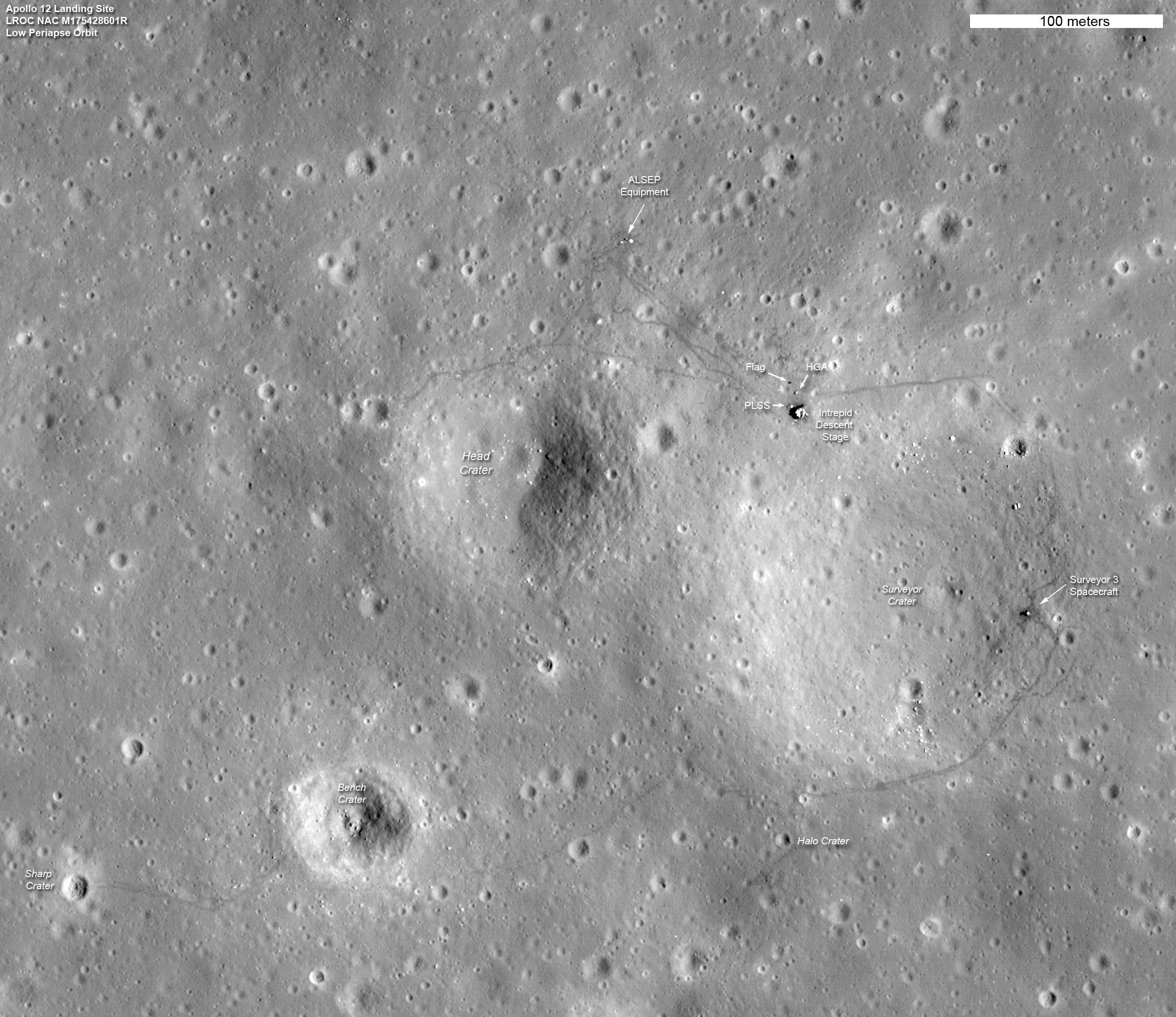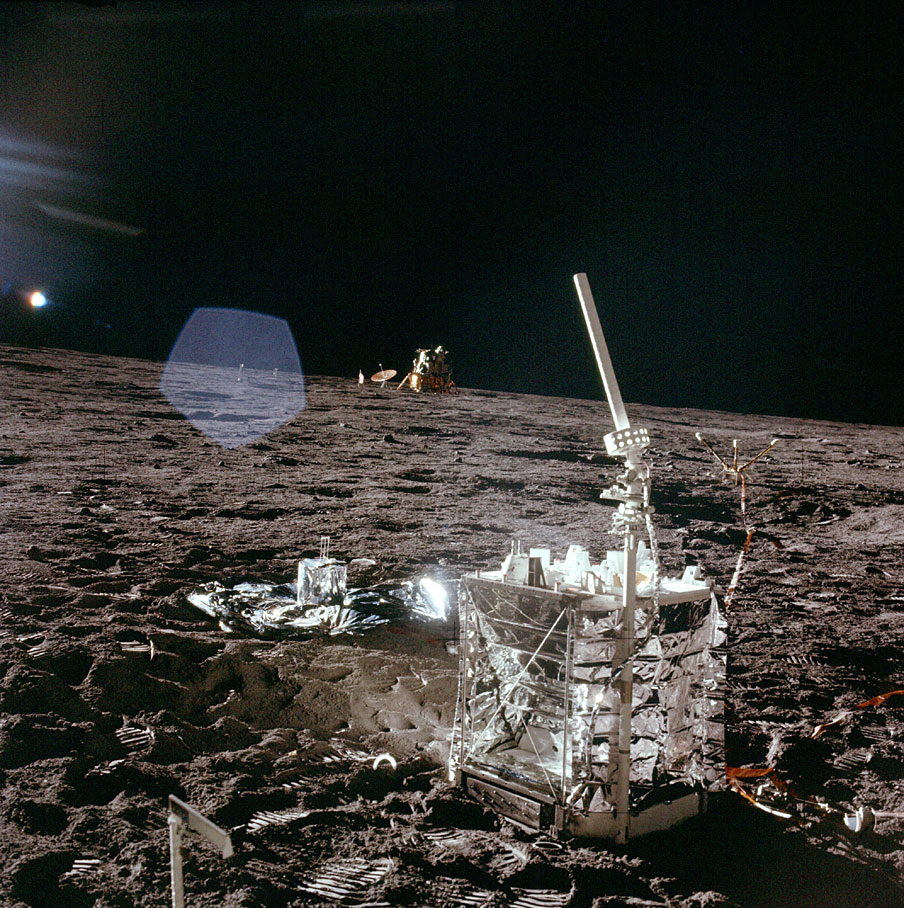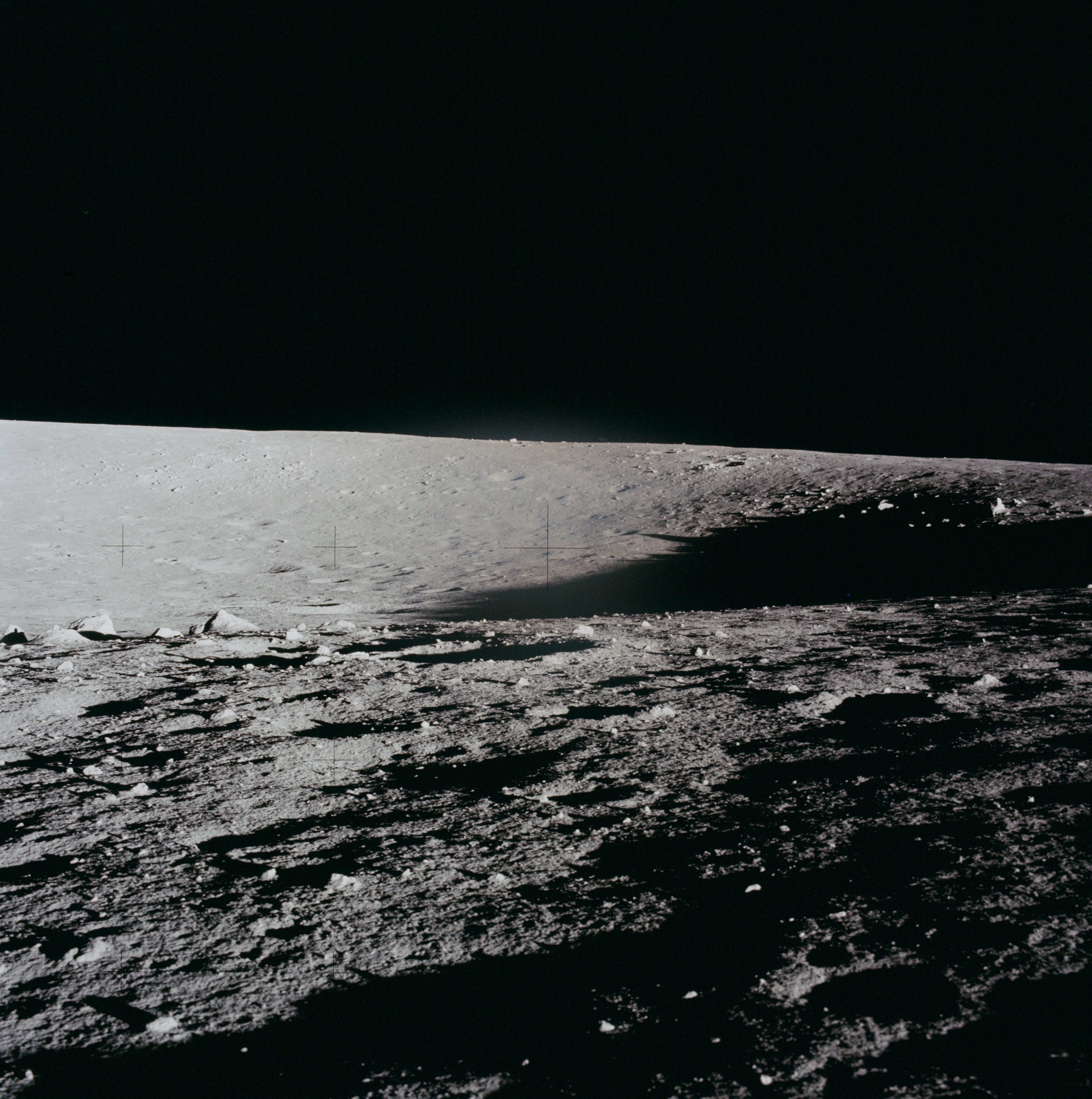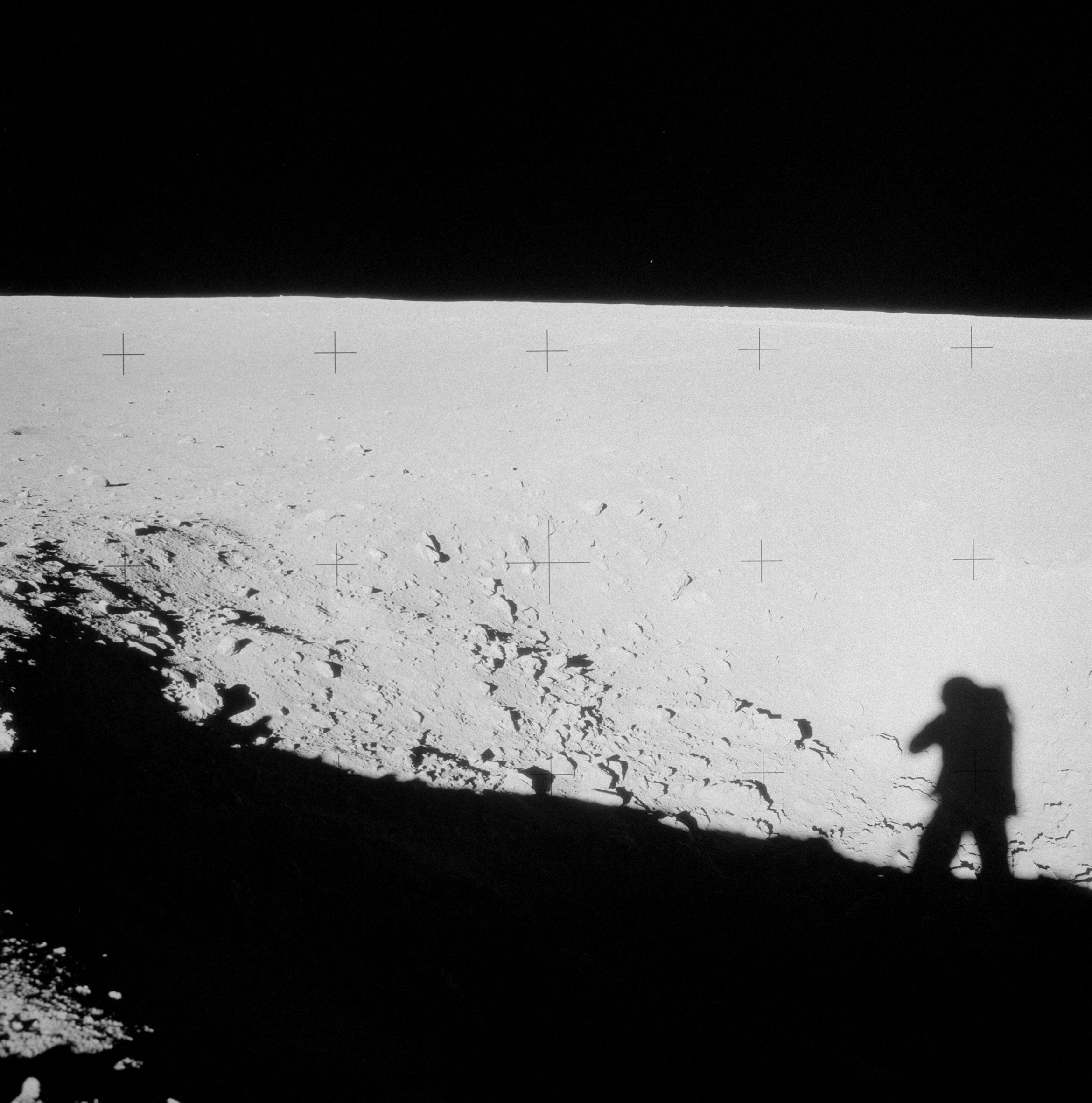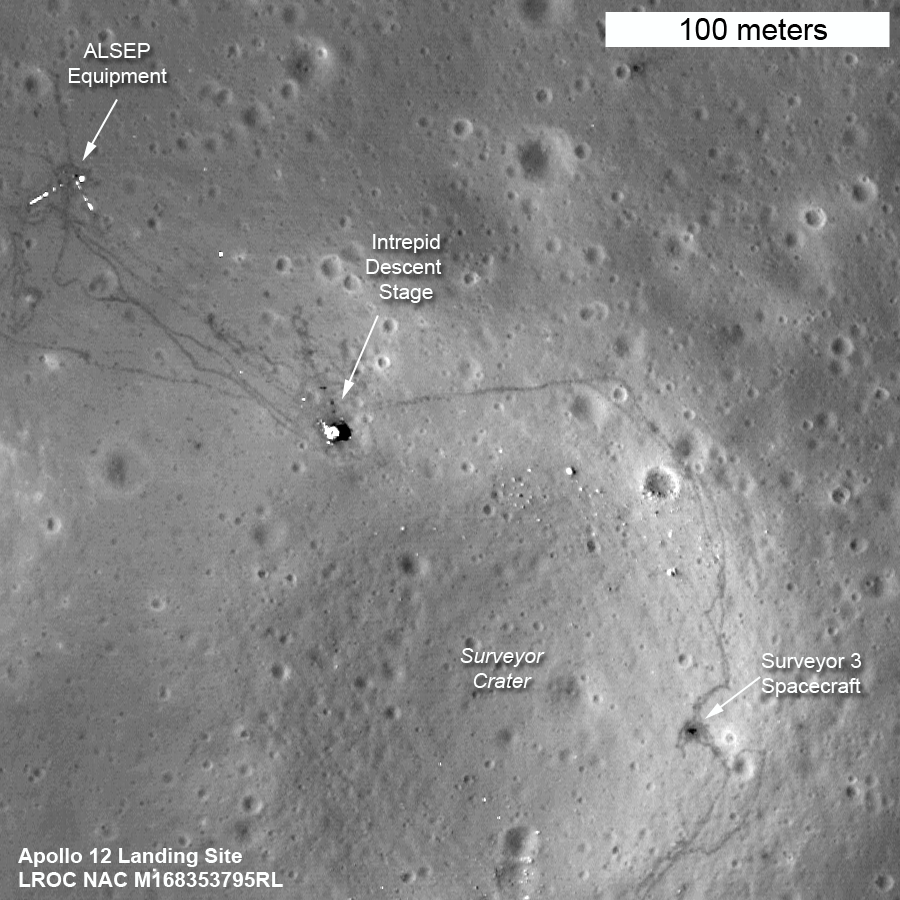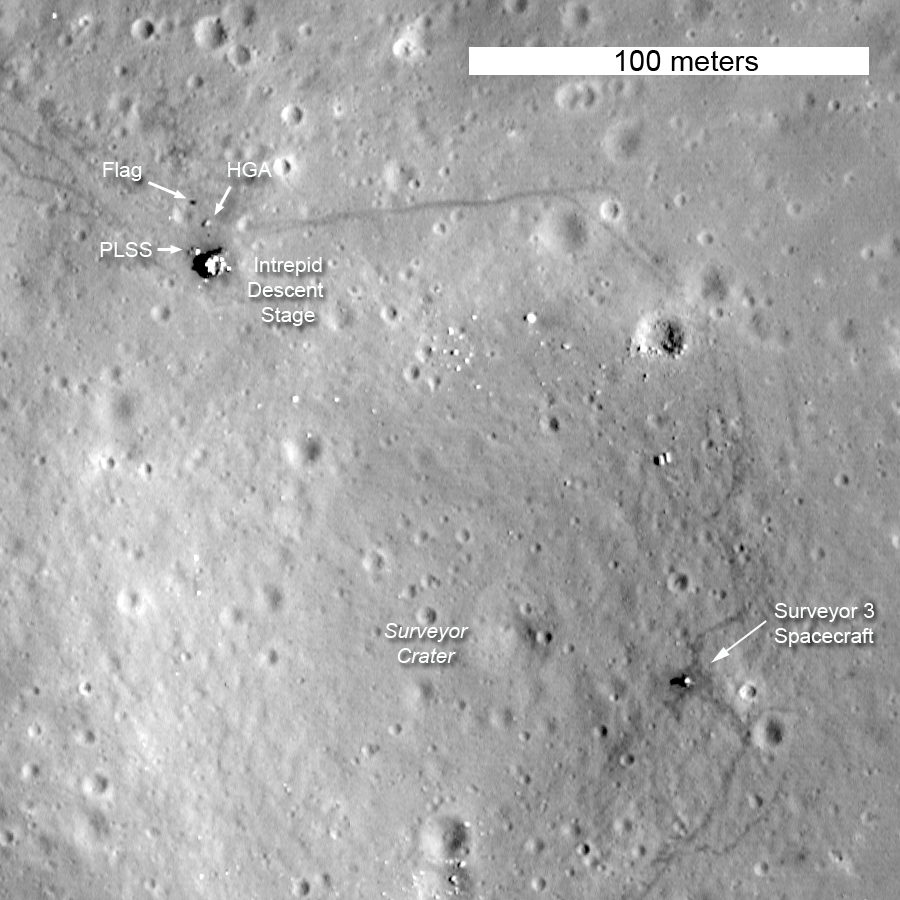
The LRO mission continues to collect observations that are enabling ground-breaking new scientific discoveries about the Moon. As geologists, whenever we look at remotely sensed data collected from another planet, in a sense we are staring back in time. But this is the “deep time” of geology, where we are trying to understand natural processes that (at least on the Moon, anyway) could have happened billions of years ago. But the LRO mission is unique because we can also see human history. Not just any history, either, but one of humanity's greatest accomplishments, our first steps on another world. Twelve astronauts explored the lunar surface, directly seeing things with their own eyes, making observations, and collecting samples with their own hands. These samples and observations revolutionized our understanding of our solar system.
This “snapshot in time” effect is especially evident at the Apollo 12 landing site in Oceanus Procellarum, now known as Statio Cognitum. Here, you can see the remnants of not one, but two missions to the Moon. Astronauts Pete Conrad and Alan Bean demonstrated that a precision lunar landing with the Apollo system was possible, enabling all of the targeted landings that followed. Bean and Conrad collected rock samples and made field observations, which resulted in key discoveries about lunar geology. They also collected and returned components from the nearby US Surveyor 3 spacecraft, which landed at this site almost two and half years previously, providing important information to engineers about the how materials survive in the lunar environment.
In the image above, you can see the remnants of the scientific experiments the astronauts set up on the surface, the first long-term Apollo Lunar Surface Experiments Package (ALSEP). Powered by a Radioisotope Thermoelectric Generator (RTG), the ALSEP included a seismometer to record "moonquakes" and several experiments designed to make measurements of the lunar environment, including a Solar Wind Spectrometer, a Cold Cathode Ion Gauge, and a Suprathermal Ion Detector (see if you can find each piece of hardware). The Apollo 12 ALSEP returned data and measurements to Earth for over seven years following the mission and was turned off in September 1977. From the lower altitude you can pick out the shadow of the still standing flag, the High Gain Antenna (HGA), and the discarded Portable Life Support System (PLSS) backpacks.
After deploying the ALSEP, the astronauts moved to the northwest, eventually stopping to take a series of photographs of the crater dubbed “Middle Crescent”. The boulders the astronauts observed on the surface are visible in the LROC image above.
During the second EVA, the astronauts performed a geologic traverse on foot covering almost 1.5 km. In today’s image, you can clearly follow the path they took edging around Head crater, proceeding to Bench and Sharp craters with a brief stop at Halo crater, visiting the Surveyor spacecraft, and then returning to the Lunar Module.
One of the most common questions prior to the launch of LRO was: will you be able to see the American flags that were left on the Moon by the astronauts? The flags themselves are too small to be seen by the NACs, even with the small pixel scales enabled by the low-altitude orbit. However you can see the shadow being cast by the flag. This is especially evident in this movie [15 MB Quicktime file] of LROC images of a complete lunar day, shown sequentially from dawn to dusk. Watch the rotation of the shadows carefully, and you can see the shadow cast by the flag! Question answered, yes you can find the flag - but what does it look like? Have the stars and stripes faded? That question will remain for a future landed spacecraft.
LRO was placed in low periapse orbits during two months last year: 8 August 2011 to 6 September 2011 and 31 October to 27 November 2011. In each month, LROC was able to obtain low altitude images of the Apollo 12 site. For comparison, the first low-altitude image is shown below. When this image was acquired, the Sun was 54° above the horizon (early-afternoon) and in today's Featured Image the Sun was 45° above the horizon (mid-morning). Incredibly, you can even see the ribbon cables connecting the ALSEP instruments to the central station in this first low-altitude Apollo 12 image (below). The cables appear as bright, straight lines leading from the SIDE and LSM, and are visible because, despite being narrower than the 25-cm pixel scale, they are highly reflective.
Forty-two years ago, using technologies that many people today would probably (and erroneously) find hopelessly antiquated, the crew of Apollo 12 executed a flawless precision landing on another world. Imagine how much more today’s astronauts will accomplish when we return to the Moon with 21st century technology!
Explore the Ocean of Storms in our newest NAC observation!
Be sure to check out this Youtube video showing the Apollo 12 landing site:
Other LROC Images of the Apollo 12 Landing Site:
First Look: Apollo 12 and Surveyor 3
Apollo 12 Second Look: Midday on the Ocean of Storms
First Low Altitude Apollo 12 NAC Image
Published by Samuel Lawrence on 6 March 2012
